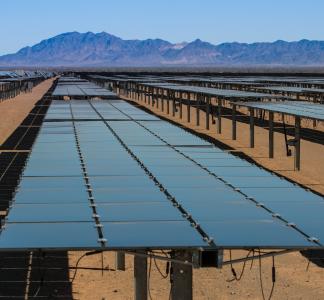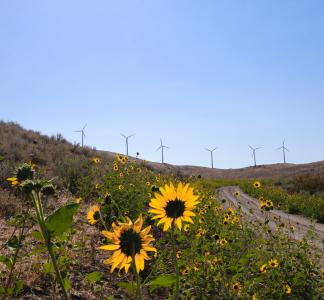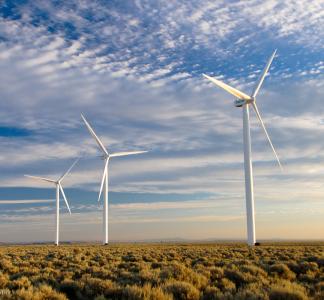9 facts you probably didn't know about solar energy

Randy Montoya, Sandia Labs, flickr
A rapid transition from fossil fuels to a renewable energy economy, including solar energy, is vital for our future.
Switching to clean energy sources like solar power can help combat climate change and, when built in the right places, ensure that our lands and natural resources persist for generations to come.
Renewable energy serves as a crucial avenue for meeting energy needs while safeguarding public lands, by presenting viable alternatives to oil and gas drilling, and coal mining. Unlike fossil fuels—which, in addition to being toxic, will eventually run out and are already becoming less and less economical—renewables continue to be replenished, providing a sustainable path forward for our energy needs.
Top 9 solar facts:
-
Solar energy is the most abundant energy resource on earth.
It is estimated that the Earth receives about 173,000 terawatts of solar energy continuously. That's more than 10,000 times the world's total energy use.
-
Solar energy is one of the oldest energy sources.
In fact, the ability to harness energy from the sun’s rays was discovered over 200 years ago by the French physicist Edmond Becquerel. The first silicon solar cell, the precursor of all solar-powered devices, was built by Bell Laboratories in 1954. The New York Times proclaimed the milestone, “the beginning of a new era, leading eventually to the realization of one of mankind’s most cherished dreams—the harnessing of the almost limitless energy of the sun for the uses of civilization.”
-
The United States ranks second in the world in solar energy production, after China.
Solar energy is the fastest growing energy source in the U.S. and is expected to be the largest source of generating capacity on the U.S. grid by 2050.
-
Solar energy emits far fewer greenhouse gas emissions than fossil fuels.
Solar power does not produce emissions during generation and its life-cycle emissions are around 12 times less than natural gas and 20 times lower than coal.
-
The cost of solar is dropping!
It is now cheaper than natural gas or coal! The cost of unsubsidized solar has fallen 84% since 2009. Right now, 99% of existing coal plants in the U.S. are more expensive to keep running than it would be to build new solar (or wind) energy farms nearby instead.
-
Expanding solar power is essential to meet climate goals (which is critical to protect people, wildlife and ecosystems).
We need to limit global warming to 2°C from the pre-industrial level. For that we need changes in the energy sector. And solar energy can help. According to the International Energy Agency, solar energy alone accounted for three-quarters of new renewable capacity in 2023. IEA also says solar capacity worldwide could surpass natural gas by 2026 and coal by 2027!
-
Solar energy is great for the economy!
According to the latest count from 2022, the U.S. solar industry employs more than 255,000 workers. Additionally, the solar industry is creating jobs five times faster than the overall job market! The Bureau of Labor Statistics has identified "solar photovoltaic installer" as one of the fastest-growing occupations from 2021 to 2031, with an anticipated growth rate of 27%.
-
The top 5 states in solar power generation are: California, Texas, Florida, North Carolina and Nevada.
According to the Department of Energy, solar technologies function most efficiently in the southwestern United States, which receives the most sunshine. But technological improvements are also making solar viable in places where it didn’t work very well just 10 years ago.
-
Public lands are great places for solar energy.
Addressing our current and future energy needs and breaking free from fossil fuel dependence requires a widespread adoption of both rooftop solar and large-scale renewable energy projects. Our shared public lands will (and already do) play a large role in expanding the U.S. renewable energy supply, since they harbor substantial wind, solar and geothermal resources. Learn more about how to develop solar energy responsibly on public lands.
Doing solar energy the right way on public lands.
Solar development on public lands offers many benefits, from reducing the threat of climate change to creating green jobs. However, large-scale projects can have big impacts on the land, so it is important that they be built in the right places and the right ways to minimize negative impacts.
The Bureau of Land Management (BLM) oversees a greater extent of public lands than any other agency. By adopting a "smart from the start" strategy–which involves strategic planning and prioritizing not only swift development but also minimizing adverse effects on communities, Tribal Nations and habitats–the BLM has the potential to significantly propel the renewable energy revolution.



